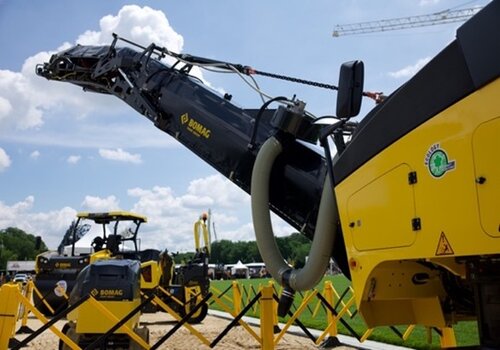The keys to turning a profit on a construction project might seem obvious: estimate accurately, execute efficiently and control costs. But a lot of things can go wrong at various phases of the project management lifecycle. By creating an environment where interdepartmental teams are all on the same page, construction companies can react to changes in a more timely fashion, helping keep projects on track and profits within reach.
Phase 1: Project Initiation
Don Swasing, CEM and COO of site prep firm Schlouch Inc., says this Phase 1 is when project failure occurs most often. There are a few common reasons why.
Sometimes a construction company takes on a project that is outside of its comfort zone. “In the 2008-10 timeframe, we started doing projects out of survival mode that were not in our wheelhouse,” Swasing says. That isn’t the case today. Schlouch is very deliberate in how it selects projects to bid on. The company has a team of estimators who are compensated well and expected to be highly proficient.
“We have essentially started putting Phase 1 accountability right where it belongs: with our estimators,” Swasing says. “It has been many years since our CEO has had to close a deal. Our estimators know what we are good at and what to say ‘no’ to.”
Another common reason for failure is not having enough time to put a quality bid together. Additionally, sometimes the wrong team is putting the bid together.
Swasing says the assembling of teams is critical during Phase 1. He likes to use the term “social architecture.” It’s important to pair people who work well together. It’s equally important to pair the right types of employees with the right types of clients. For instance, you might need some stronger personalities working on projects for your more demanding clients.
Phase 2: Project Planning
During Phase 2, Schlouch conducts an initial turnover meeting.
“It’s a brain dump between the estimator, site superintendent and field staff,” Swasing explains. “We’ve also added a kick-off meeting that brings everyone together who will be working on the project. We start off the meeting by asking an icebreaker question like, ‘What is your favorite gas station food to eat?’ We are looking to deepen the connection between the people working on the project.”
The kick-off meeting is also an opportunity to look at contract status and identify problems that might need to be addressed before the project gets underway.
Next comes execution planning. The team conducts a WBS (work breakdown structure) exercise to identify all of the work that needs to be done in terms of activities and tasks, durations and timelines, and resources. “We create a baseline schedule that identifies what we said we will do, as well as the logic that was based on,” Swasing says. “There also might be necessary changes we identify that triggers conversations about change orders.”
As Phase 2 moves along, Schlouch starts conducting leapfrog planning every other week for several weeks. This builds on the WBS exercise already conducted. “This helps keep everything visible,” Swasing points out. “We’ve found that our customers now expect this from us.”
Finally, Schlouch sets stretch goals during Phase 1. “You want to identify those opportunities in a project for labor gains, and then pin that to the wall so everyone knows what we are really striving for,” Swasing says. For instance, the bid says a certain task will be completed in four days, but you identify that it could be completed in three days.
Phase 3: Project Execution
The successful execution of a project requires the right resources at the right time. Schlouch conducts resource forecasting every other week, taking a look at personnel and equipment needs.
The company also examines its strategic alliances with vendors and subcontractors. Schlouch brings vendors in once a year to provide feedback on how it is performing in the way of paying bills, communicating its schedule, etc. Maintaining good channels of communication with partners is vital to effective resource management.
No resource is more vital than labor. “Let’s face it,” Swasing says. “Construction contractors are basically in the labor management business.” There aren’t too many material or equipment cost overruns that kill project profitability. Problems usually tie back to mismanaged labor. “You have to keep employees not just busy, but productive,” Swasing adds.
Phase 4: Monitor and Control
Once a project is underway, construction firms need good systems and controls in place to monitor what is happening as the project evolves. Estimating, field staff and accounting must all work together. “This collaboration is critical,” says Rich King, CFO of Schlouch.
Schlouch’s field reporting system generates “signals” on a daily basis. Project management teams can see how a project is performing relative to the estimate. The key is that teams can see this vital information early enough in the project that any necessary adjustments can be made.
“This is why collaboration is so important,” King says. For example, one signal could come from the field, such as a crew identifying a problem on site. Another signal could come from accounting with respect to job costing information. “You must have that continuous feedback loop so teams can identify issues when the project is only 15 or 20 percent complete, as opposed to 80 or 90 percent when it is often too late to do anything about it,” King says.
Schlouch has several tools in its Phase 4 toolkit to help monitor projects:
- Daily field log – The foreman enters daily jobsite data like labor, materials, equipment, trucking and subs. Results are compared to estimate.
- Job overview of performance – Provides a quick snapshot of how the project is going compared to the estimate from both quantity and cost perspectives. This report shows different tasks and cost codes, comparing actual costs to estimated. If a cost code is running over estimate, project managers can take note and investigate what is going on. This report should be used by field staff, estimating and accounting.
- Cost to complete – This weekly report shows a cost code, such as a task like cut/fill/compact, and then shows bid quantity, quantity completed and percent complete. Then it examines bid unit cost compared to current unit cost. All of this information can help project overruns and underruns. Anything projected as an overrun can trigger a dialogue to help the team get ahead of the problem.
Phase 5: Project Closeout
King says it’s important to develop a “kick finish” execution plan. This plan identifies tasks that need to be completed before a project can be closed. Once those tasks are identified, responsibility for getting them done is assigned.
It is also helpful to develop a closeout checklist. “This provides a proactive approach to protect the gains you have on the rest of the project,” King explains. “What do you need to do to collect your final payment and get your retainage? Put it on a list and assign responsibility for getting it handled.”
While it’s important to identify critical tasks to which individual responsibility is assigned, construction firms must also recognize that maximizing profitability requires a total team effort. When all members of a project team have access to the same real-time data, they can develop a greater understanding of each project’s risks and opportunities. Then they can make better decisions at each phase of the project management lifecycle — decisions that help maximize project profitability.
This article is based on a presentation given at CONEXPO-CON/AGG 2020. Don Swasing, CEM, is the COO of Schlouch Inc., a Pennsylvania-based site preparation company serving a variety of commercial, industrial, residential, public and energy sector clients. Rich King serves as the company’s CFO.












